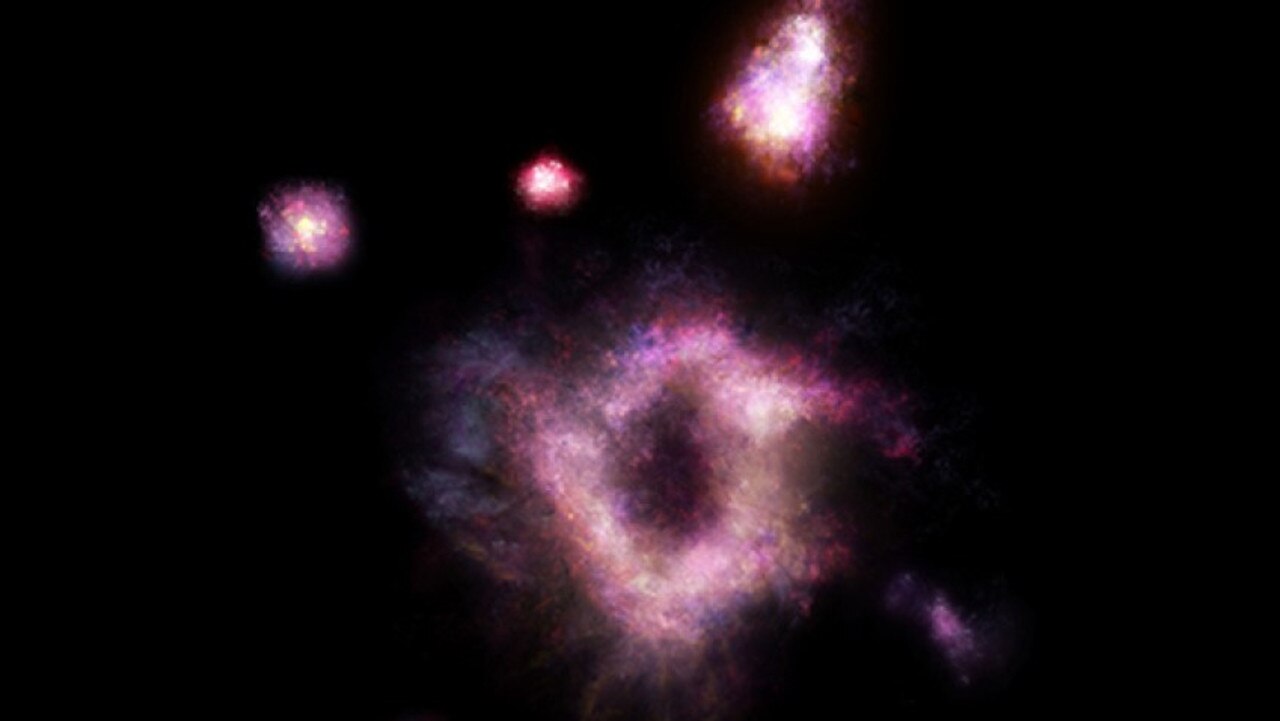Rare R5519 ‘Ring of Fire’ galaxy discovered 11 billion lightyears away
Astronomers have discovered what might be the first galaxy to form after a violent collision of two others, and it could help explain how we got here too.
Australian astronomers have looked back in time to photograph a rare “ring of fire” galaxy as it looked 11 billion years ago.
The galaxy is roughly the same density as our own Milky Way and appears circular with a hole in the middle, with the astronomers saying it likely formed after two other galaxies collided.
The findings were recently published in the peer-reviewed journal Nature Astronomy.
The new galaxy has been dubbed R5519 and sits 11 billion lightyears away from Earth.
The giant “hole” at the centre of the galaxy has a diameter scientists say is two billion times the distance between the Earth and the Sun (which is roughly 151 million kilometres).
That’s also three million times bigger than the first supermassive black hole caught on camera last year.
The black hole was located in the Messier 87 galaxy.
RELATED: Pentagon releases video of UFO incidents
Dr Tiantian Yuan from Swinburne University’s Centre for Astrophysics and Supercomputing said that while the galaxy is roughly the same size as the Milky Way, it appears more productive.
“It is making stars at a rate 50 times greater than the Milky Way,” Dr Yuan said, adding that most of the stars were appearing at the edge of the galaxy, leading to the galaxy being dubbed a “ring of fire”.
Astronomers from institutions in Australia, US, Canada, Belgium and Denmark worked on the study, which used data gathered by Hawaii’s WM Keck Observatory and images from NASA’s Hubble Space Telescope.
R5519 is thought to be a “collisional ring galaxy”, which form when galaxies collide.
If that’s the case it could be one of the earliest collisional ring galaxies in the universe, and the first one that scientists are currently aware of.
RELATED: Birth of baby planet captured

RELATED: NASA relying on Bezos, Musk
Collisional ring galaxies are around 1000 times rarer than galaxies that form independently.
Co-author Dr Ahmed Elagali from Western Australia’s International Centre for Radio Astronomy Research said studying the latest discovery would help determine when spiral galaxies began to develop.
“Further, constraining the number density of ring galaxies through cosmic time can also be used to put constraints on the assembly and evolution of local-like galaxy groups,” he said.
Australian National University’s Professor Kenneth Freeman from the Australian National University, says the discovery has implications for understanding how our own galaxy was formed.
“In the case of this ring galaxy, we are looking back into the early Universe by 11 billion years, into a time when thin disks were only just assembling.
“For comparison, the thin disk of our Milky Way began to come together only about nine billion years ago,” Prof Freeman said.
“This discovery is an indication that disk assembly in spiral galaxies occurred over a more extended period than previously thought.”



